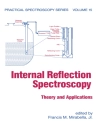This one-stop reference is the first to present the complete picture — covering all relevant organisms, from single cells to mammals, as well as all major disease areas, including neurological disorders, cancer and infectious diseases.
Addressing the needs of the pharmaceutical industry, this unique handbook adopts a broad perspective on the use of animals in the early part of the drug development process, including regulatory rules and limitations, as well as numerous examples from real-life drug development projects.
After a general introduction to the topic, the expert contributors from research-driven pharmaceutical companies discuss the basic considerations of using animal models, including ethical issues. The main part of the book systematically surveys the most important disease areas for current drug development, from cardiovascular to endocrine disorders, and from infectious to neurological diseases. For each area, the availability of animal models for target validation, hit finding and lead profiling is reviewed, backed by numerous examples of both successes and failures among the use of animal models. The whole is rounded off with a discussion of perspectives and challenges.
Key knowledge for drug researchers in industry as well as academia.
Содержание
Preface
PART I: Transversal Issues Concerning Animal Models in Drug Discovery
THE 3Ns OF PRECLINICAL ANIMAL MODELS IN BIOMEDICAL RESEARCH
First N: The Need for Use of Animal Models
Second N: The Need for Better Animal Models
Third N: The Need for 3Rs Guiding Principles
ALTERNATIVE MODELS IN DRUG DISCOVERY AND DEVELOPMENT PART I: IN SILICO AND IN VITRO MODELS
Introduction
In Silico Models
In Vitro Models
ALTERNATIVE MODELS IN DRUG DISCOVERY AND DEVELOPMENT PART II: IN VIVO NONMAMMALIAN AND EXPLORATORY/EXPERIMENTAL HUMAN MODELS
Introduction
In Vivo Nonmammalian Models
In Vivo Exploratory and Experimental Human Models
ETHICAL ISSUES AND REGULATIONS AND GUIDELINES CONCERNING ANIMAL RESEARCH
Introduction
Current Use of Animals in Biomedical and Pharmaceutical Research
Ehtical Concerns and Positions on Animal Research
General Principles for the Ethical Use of Animals in Research
Regulatory Framework for Use of Animals in Research
REGULATORY ISSUES: SAFETY AND TOXICOLOGY ASSESSMENT
Introduction
Animal Species in Toxicology Studies
Toxicology Studies
Translation to Clinics: Limitations and Difficulties
GENERATION AND USE OF TRANSGENIC MICE IN DRUG DISCOVERY
Introduction
Improved Mouse Genetic Engineering
Functional Evaluation and Uses of Mouse Models
Translation to Clinics: Limitations and Difficulties
Perspectives
IN VIVO BRAIN IMAGING IN ANIMAL MODELS: A FOCUS ON PET AND MRI
Introduction: Role of Animal in In Vivo Imaging
The Choice of the Right Imaging Modality for Brain Imaging
Small Animal Magnetic Resonance Imaging
Positron Emission Tomography
Clinical Translation: Limitations and Difficulties
PART II: Animal Models in Specific Disease Areas of Drug Discovery
SUBSTANCE ABUSE AND DEPENDENCE
Introduction
Difficulties to Model Addiction in Animals
Tolerance, Sensitization, and Physical Withdrawal
Reward and Reinforcement
Translation to Clinics: Limitations and Difficulties
MOOD AND ANXIETY DISORDERS
Introduction
Animal Models of Anxiety Disorders
Animal Models of Mood Disorders
Translation to Clinics: Limitations and Difficulties
SCHIZOPHRENIA
Introduction
Models Amenable to Use in Screening
Translation to Clinics: Limitations and Difficulties
MIGRAINE AND OTHER HEADACHES
Introduction
Vascular Models
Neurogenic Inflammation
Nociceptive Activation of the Trigeminovascular System
Cortical Spreading Depression
Human Experimental Migraine Provoking Models
Animal Experimental Migraine Provoking Models
Transgenic Models
Behavioral Models
Translation to Clinics: Limitations and Difficulties
NOCICEPTIVE, VISCERAL, AND CANCER PAIN
Introduction
Acute Pain Tests
Visceral Pain Models
Cancer Pain Models
Translation to Clinics: Limitations and Difficulties
INFLAMMATORY, MUSCULOSKELETAL/JOINT (OA AND RA), AND POSTOPERATIVE PAIN
Introduction: Evaluation of Pain in Animal Models
Inflammatory Pain
Musculoskeletal/Joint Osteoarthritis (OA) and Rheumatoid Arthritis (RA) Pain
Postoperative Pain
Translation to Clinics: Limitations and Difficulties
NEUROPATHIC PAIN
Introduction
Main Types of Neuropathic Pain in Humans
Modelization of Chronic Pain in Rodents
Translation to Clinics: Limitations and Difficulties
OBESITY AND METABOLIC SYNDROME
Introduction
Why Metabolic Syndrome?
Classical Animal Models of Obesity and Metabolic Syndrome
Human Experimental Models
Translation to Clinics: Limitations and Difficulties
COGNITIVE DISORDERS: IMPAIRMENT, AGING, AND DEMENTIA
Introduction
Pharmacological Models
Aging and Transgenic Models
Translation to Clinics: Limitations and Difficulties
STROKE AND TRAUMATIC BRAIN INJURY
Introduction
Stroke Models
Traumatic Brain Injury Models
Translation to Clinics: Limitations and Difficulties
MOVEMENT DISORDERS: PARKINSON’S DISEASE
Introduction
Drug- and Toxin-Based Models of PD
Genetic and Functional Models of PD
Translation to Clinics: Limitations and Difficulties
EPILEPSY: ANIMAL MODELS TO REPRODUCE HUMAN ETIOPATHOLOGY
Introduction
What Animal Species to Use to Model Epilepsy?
Which Type of Models Provide
Об авторе
Jose Miguel Vela obtained his Ph D at the Autonomous University of Barcelona (UAB). He was working as a faculty member engaged in both teaching and research at the Department of Cell Biology, Physiology and Immunology of the UAB. In 2003 he joined ESTEVE R&D as Head of Target Validation, was then Director of Pharmacology, and currently is the Head of Drug Discovery and Preclinical Development. Starting as a neurobiologist he progressed as a neuropharmacologist. His current research is focused on the discovery and development of new analgetics. He has authored more than 100 scientific publications and 80 patent applications.
Rafael Maldonado is Professor of Pharmacology at the University Pompeu Fabra in Barcelona (Spain), where he founded the Laboratory of Neuropharmacology. His research is focused on the study of the neurochemical basis of drug dependence and related disorders, including affective, pain and eating disorders, with a particular focus on the development of novel behavioral models. He has published over 250 scientific articles in international journals and he has been Principal Investigator for 20 years of research grants funded by the main French, Spanish, European, and USA agencies. He is also member of the editorial board of several scientific journals, and has also collaborated with public authorities and private companies in the research policy and pharmaceuticals development on drug abuse and pain.
Michel Hamon is Professor of Neuropharmacology at the University Pierre and Marie Curie in Paris (France). He founded and led a Neuropsychopharmacology Unit of the French Institute for Health and Medical Research (INSERM) at the Faculty of Medicine Pitié-Salpêtrière, with the focus on neurobiological mechanisms underlying key brain functions (nociception, sleep, neurovegetative regulations) and behavioral controls by using validated animal models. He has published more than 600 scientific articles. He edited 6 books, and was president of the French Society for Neuroscience and executive officer of the European College of Neuropsychopharmacology (ECNP).












